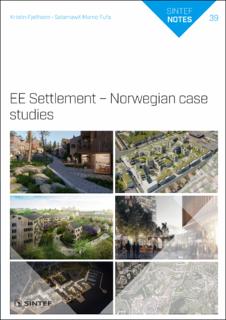| dc.description.abstract | The vision of the project EE settlement – Embodied energy, costs and traffic in different settlement patterns is to provide a decision support tool and a guideline which enable municipal planners and other stakeholders to assess the expected impacts of new developments in early planning stages. The main goal of performing case study tool testing is to get insight into how the tool performs when being used by the end-user. The tool testers from the municipalities will both give feedback on the tool functionality, user friendliness and how the tool can be practically applied as a decision support tool in the field of work.
For the Norwegian case studies seven locations in six different municipalities were selected as relevant based on certain selection criteria. These case studies are Hamrevann and Marviksletta in Kristiansand municipality, Zero Village Bergen in Bergen municipality, Ydalir in Elverum municipality, Sluppen in Trondheim municipality, Molobyen in Bodø municipality and Nedre Rommen in Oslo municipality.
There were three tool testing rounds where the first two focused on giving feedback to the tool and guideline development while the last round focused on tool functionality and how it could be used as a decision support tool. The test subjects gave feedback on the availability of information requirements for data input to the tool, on what type of decisions the tool could be used for and which criteria and aspects are important to evaluate when planning a new settlement area.
For further development of the tool and for future research focus the test subjects suggested:
• The tool could show some uncertainty values in order to give a range of emissions instead of one single number.
• Extending the tool to also evaluate transformation of areas.
• Several of the urban planners and developers saw the need for a "base case" or "reference scenario".
• In many of the early planning stages the development areas are quite large and very often divided into several sub-areas. It could be useful to have the possibility to input for each sub-area and add them together as needed as they usually follow different time schedule. | |
